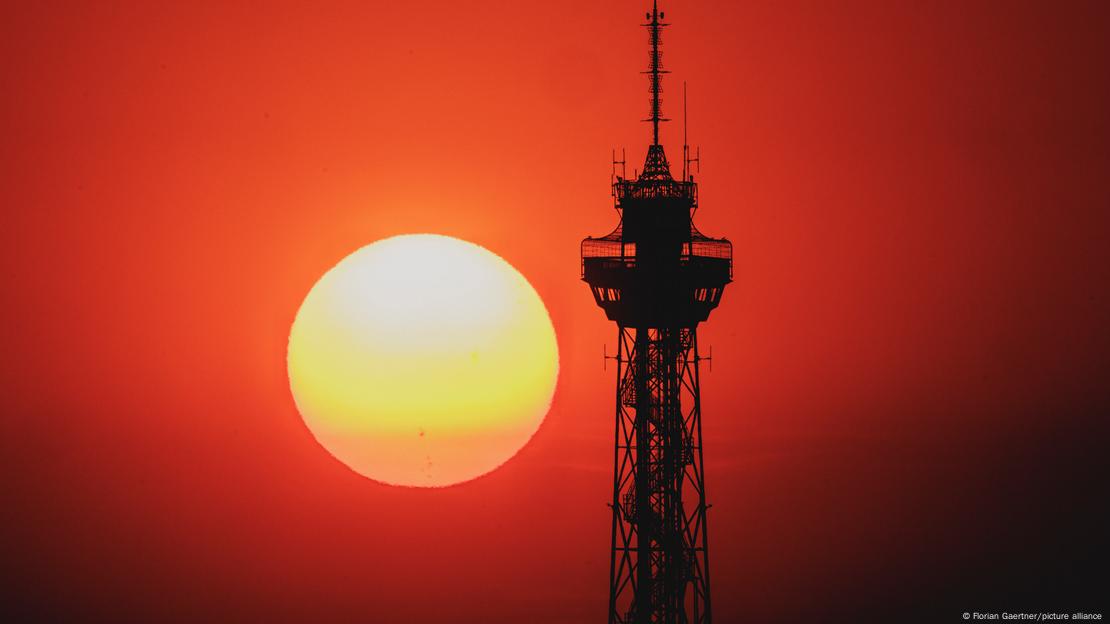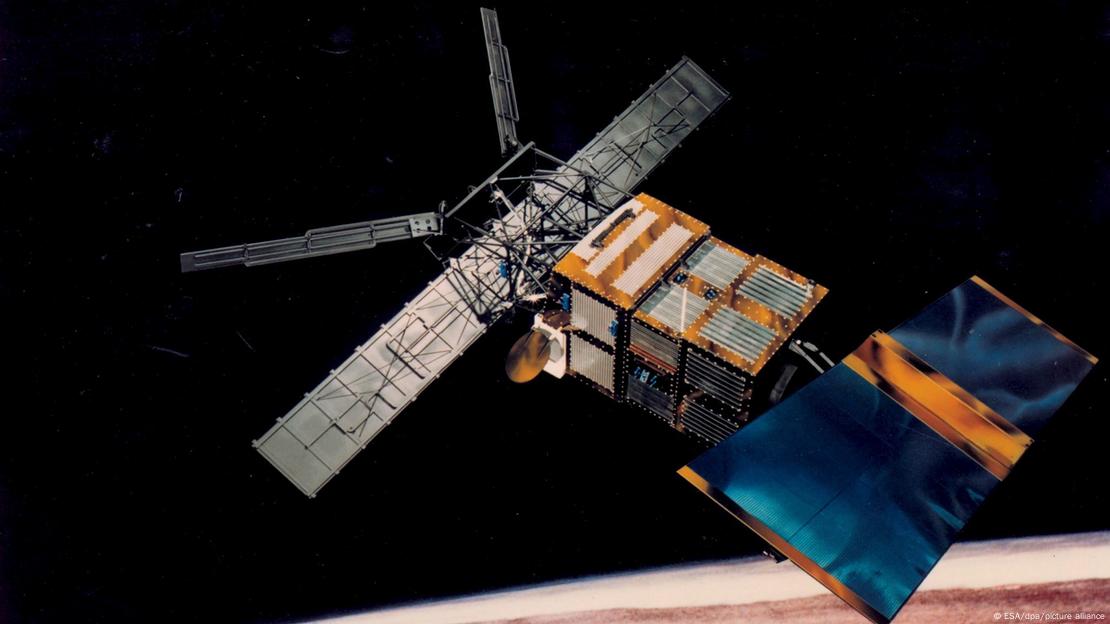Anne-Sophie Brändlin
DW
Condensation trails or contrails — the white, feathery lines behind airplanes — could have as big an impact on the climate as the aviation sector's CO2 emissions. Here's why, and what we can do mitigate the effects.


Condensation trails or contrails — the white, feathery lines behind airplanes — could have as big an impact on the climate as the aviation sector's CO2 emissions. Here's why, and what we can do mitigate the effects.
The climate impact of aviation could be three times higher than thought because of non-CO2 emissions like contrails
Image: Nicolas Economou/picture alliance
When thinking of flying's environmental impact, the CO2 emitted from burning jet fuel is usually what springs to mind. But there's another, lesser understood climate culprit hiding in plain sight: condensation trails.
The wispy, cloud-like formations left by airplanes as they traverse the skies may look innocuous, but the climate impact from 'contrails' could be similar to aviation CO2.
"I'm actually more worried about contrails at this point than I am about CO2 emissions because it is an impact that has not been internalized by the industry in any shape or form," said Jayant Mukhopadhaya, a lead aviation researcher for the International Council on Clean Transportation (ICCT), a US environment think tank.
A 2021 study suggests contrails and other non-CO2 emissions could account for up to two-thirds of aviation's total climate impact. Contrails could represent 57% of that impact — roughly the same as CO2 emissions from burning fuel.
The aviation industry is currently thought to be responsible for 2 to 3.5% of global CO2 emissions annually.
"But if you start taking into account these other pollutants that aviation is responsible for, the aviation sector is actually accounting for a far higher amount of warming than we usually ascribe to it," said Mukhopadhaya, adding that it could be three times greater than previously assumed.
How are contrails formed and why are they a problem?
Contrails form when airplanes fly through very cold, humid pockets of air in the upper atmosphere. When plane engines burn jet fuel, water vapor condenses on particles from the air and exhaust to form ice crystals. If there are a lot of ice crystals, they make cirrus clouds.
"Some of them persist for only a few seconds or minutes, others for hours or even days, depending on the amount of moisture and the temperature," said Patrick Minnis, a senior NASA scientist researching the climate impact of contrails and the behavior of cirrus clouds.
Contrail cirrus clouds trap heat in the atmosphere. The warming effects are worse at night when they're not also reflecting sunlight back into space.
"Producing contrails is basically like wrapping a blanket around Earth every year that traps heat and warms the planet," said Mukhopadhaya.
How much warming do contrails cause?
While scientists say contrails cause warming, there's less consensus regarding the degree and timescale, as well as what they mean for climate change.
"The exact magnitude of the warming impact of contrails is uncertain. The estimates range from 30% of the impact airplane of CO2 to as much as four times, so it's quite a large range," said Mukhopadhaya.
That's because there's a level of uncertainty in most contrail studies so far due to a lack of sufficient data. But it also comes down to the metrics scientists use to measure contrail impact. For instance, according to Mukhopadhaya, unlike for long-lasting CO2, it doesn't make sense to look at contrails over a 100-year period because they dissipate so quickly.
"What we're interested in is how much global mean surface temperature changes because of these pollutants," said Mukhopadhaya. "And contrails could be responsible for roughly 15% of our available carbon budget to reach the 1.5 degrees goal by 2050."
When thinking of flying's environmental impact, the CO2 emitted from burning jet fuel is usually what springs to mind. But there's another, lesser understood climate culprit hiding in plain sight: condensation trails.
The wispy, cloud-like formations left by airplanes as they traverse the skies may look innocuous, but the climate impact from 'contrails' could be similar to aviation CO2.
"I'm actually more worried about contrails at this point than I am about CO2 emissions because it is an impact that has not been internalized by the industry in any shape or form," said Jayant Mukhopadhaya, a lead aviation researcher for the International Council on Clean Transportation (ICCT), a US environment think tank.
A 2021 study suggests contrails and other non-CO2 emissions could account for up to two-thirds of aviation's total climate impact. Contrails could represent 57% of that impact — roughly the same as CO2 emissions from burning fuel.
The aviation industry is currently thought to be responsible for 2 to 3.5% of global CO2 emissions annually.
"But if you start taking into account these other pollutants that aviation is responsible for, the aviation sector is actually accounting for a far higher amount of warming than we usually ascribe to it," said Mukhopadhaya, adding that it could be three times greater than previously assumed.
How are contrails formed and why are they a problem?
Contrails form when airplanes fly through very cold, humid pockets of air in the upper atmosphere. When plane engines burn jet fuel, water vapor condenses on particles from the air and exhaust to form ice crystals. If there are a lot of ice crystals, they make cirrus clouds.
"Some of them persist for only a few seconds or minutes, others for hours or even days, depending on the amount of moisture and the temperature," said Patrick Minnis, a senior NASA scientist researching the climate impact of contrails and the behavior of cirrus clouds.
Contrail cirrus clouds trap heat in the atmosphere. The warming effects are worse at night when they're not also reflecting sunlight back into space.
"Producing contrails is basically like wrapping a blanket around Earth every year that traps heat and warms the planet," said Mukhopadhaya.
How much warming do contrails cause?
While scientists say contrails cause warming, there's less consensus regarding the degree and timescale, as well as what they mean for climate change.
"The exact magnitude of the warming impact of contrails is uncertain. The estimates range from 30% of the impact airplane of CO2 to as much as four times, so it's quite a large range," said Mukhopadhaya.
That's because there's a level of uncertainty in most contrail studies so far due to a lack of sufficient data. But it also comes down to the metrics scientists use to measure contrail impact. For instance, according to Mukhopadhaya, unlike for long-lasting CO2, it doesn't make sense to look at contrails over a 100-year period because they dissipate so quickly.
"What we're interested in is how much global mean surface temperature changes because of these pollutants," said Mukhopadhaya. "And contrails could be responsible for roughly 15% of our available carbon budget to reach the 1.5 degrees goal by 2050."

"There are direct incentives to reduce the climate impact of CO2 emissions. Those don't exist for contrails," said MukhopadhayaImage: Florian Gaertner/picture alliance
How to cut contrails' climate impact
As contrails are short-lived compared to CO2 emissions their warming impact would disappear quickly if efforts were made to minimize their formation, say experts.
One solution is switching to "cleaner" fuels with less sulfur, like hydrogen. This would reduce the amount of air pollutants released by jets and lower the life span of contrails, according to NASA's Patrick Minnis.
Last year, the European Union introduced legislation setting mandates for sustainable aviation fuels. By 2050, all jet fuels sold in European countries will have to consist of 70% "sustainable aviation fuels."
"That will help not only reduce the non-CO2 impact from aviation, it will also have a significant impact on the sector's CO2 emissions," Mukhopadhaya said.
Scientists have also found that not all flights create contrails in the first place. It all depends on weather conditions and the aircraft's trajectory. Rerouting less than 2% of flights in Japan could have reduced the warming effect of contrails by nearly 60%, a 2020 study found.
But predicting beforehand which flight routes will cause contrails and how much warming these contrails will cause is very difficult.
"You have to consider the atmosphere like a cake. The top layer of the cake is the upper atmosphere and within that there's all sorts of striations of moisture. So, knowing exactly where those layers are that have a lot of moisture in them is something that's been relatively difficult to predict," said Minnis.
How to cut contrails' climate impact
As contrails are short-lived compared to CO2 emissions their warming impact would disappear quickly if efforts were made to minimize their formation, say experts.
One solution is switching to "cleaner" fuels with less sulfur, like hydrogen. This would reduce the amount of air pollutants released by jets and lower the life span of contrails, according to NASA's Patrick Minnis.
Last year, the European Union introduced legislation setting mandates for sustainable aviation fuels. By 2050, all jet fuels sold in European countries will have to consist of 70% "sustainable aviation fuels."
"That will help not only reduce the non-CO2 impact from aviation, it will also have a significant impact on the sector's CO2 emissions," Mukhopadhaya said.
Scientists have also found that not all flights create contrails in the first place. It all depends on weather conditions and the aircraft's trajectory. Rerouting less than 2% of flights in Japan could have reduced the warming effect of contrails by nearly 60%, a 2020 study found.
But predicting beforehand which flight routes will cause contrails and how much warming these contrails will cause is very difficult.
"You have to consider the atmosphere like a cake. The top layer of the cake is the upper atmosphere and within that there's all sorts of striations of moisture. So, knowing exactly where those layers are that have a lot of moisture in them is something that's been relatively difficult to predict," said Minnis.

Only a tiny propotion of the total flight distance is responsible for persistent contrails that cause warmingImage: Dreamstime/IMAGO
Proper prediction would require improvements in satellite work and a lot more expensive computer storage, added the NASA researcher.
Flying planes lower has been touted as another solution because contrails form at higher altitudes but the "problem is that if you go to lower levels, you're going to have more turbulence, and you're going to use more fuel," Minnis said. And that means higher CO2 emissions.
"But we estimate the impact of those additional CO2 emissions to be significantly lower than the impact from contrail production," said ICCT's Mukhopadhaya.
More data needed
A 2024 study by the International Air Transport Association (IATA), an industry trade body, suggests more data needs to be collected to understand the non-CO2 impacts of aviation so solutions can be found.

Proper prediction would require improvements in satellite work and a lot more expensive computer storage, added the NASA researcher.
Flying planes lower has been touted as another solution because contrails form at higher altitudes but the "problem is that if you go to lower levels, you're going to have more turbulence, and you're going to use more fuel," Minnis said. And that means higher CO2 emissions.
"But we estimate the impact of those additional CO2 emissions to be significantly lower than the impact from contrail production," said ICCT's Mukhopadhaya.
More data needed
A 2024 study by the International Air Transport Association (IATA), an industry trade body, suggests more data needs to be collected to understand the non-CO2 impacts of aviation so solutions can be found.

Improvements in satellite work could help mitigate contrail formation in the future
Image: ESA/dpa/picture alliance
Airlines such as Lufthansa, Air France, KLM and American Airlines have already started contrail avoidance test flights above or below at-risk areas with the help of satellite images, weather data, software models and AI prediction tools.
"That's a great first step, as about 50% of warming due to contrails happens over the US, EU and the North Atlantic — three regions with high aviation activities," said Mukhopadhaya.
A 2024 Cambridge University report suggests that accelerating the deployment of a global contrail avoidance system could reduce aviation's climate impact by 40%.
The EU has also agreed airlines will have to monitor and report the climate impact of contrails in a move opposed by the industry.
"The aviation industry has been delaying action for around 20 years now, driven by the lack of uncertainty regarding contrail science," said Mukhopadhaya. But the fact research is now being done in real life rather than on computer simulations is "very promising for avoidance measures in the future," he added.
Edited by: Jennifer Collins
Airlines such as Lufthansa, Air France, KLM and American Airlines have already started contrail avoidance test flights above or below at-risk areas with the help of satellite images, weather data, software models and AI prediction tools.
"That's a great first step, as about 50% of warming due to contrails happens over the US, EU and the North Atlantic — three regions with high aviation activities," said Mukhopadhaya.
A 2024 Cambridge University report suggests that accelerating the deployment of a global contrail avoidance system could reduce aviation's climate impact by 40%.
The EU has also agreed airlines will have to monitor and report the climate impact of contrails in a move opposed by the industry.
"The aviation industry has been delaying action for around 20 years now, driven by the lack of uncertainty regarding contrail science," said Mukhopadhaya. But the fact research is now being done in real life rather than on computer simulations is "very promising for avoidance measures in the future," he added.
Edited by: Jennifer Collins

No comments:
Post a Comment